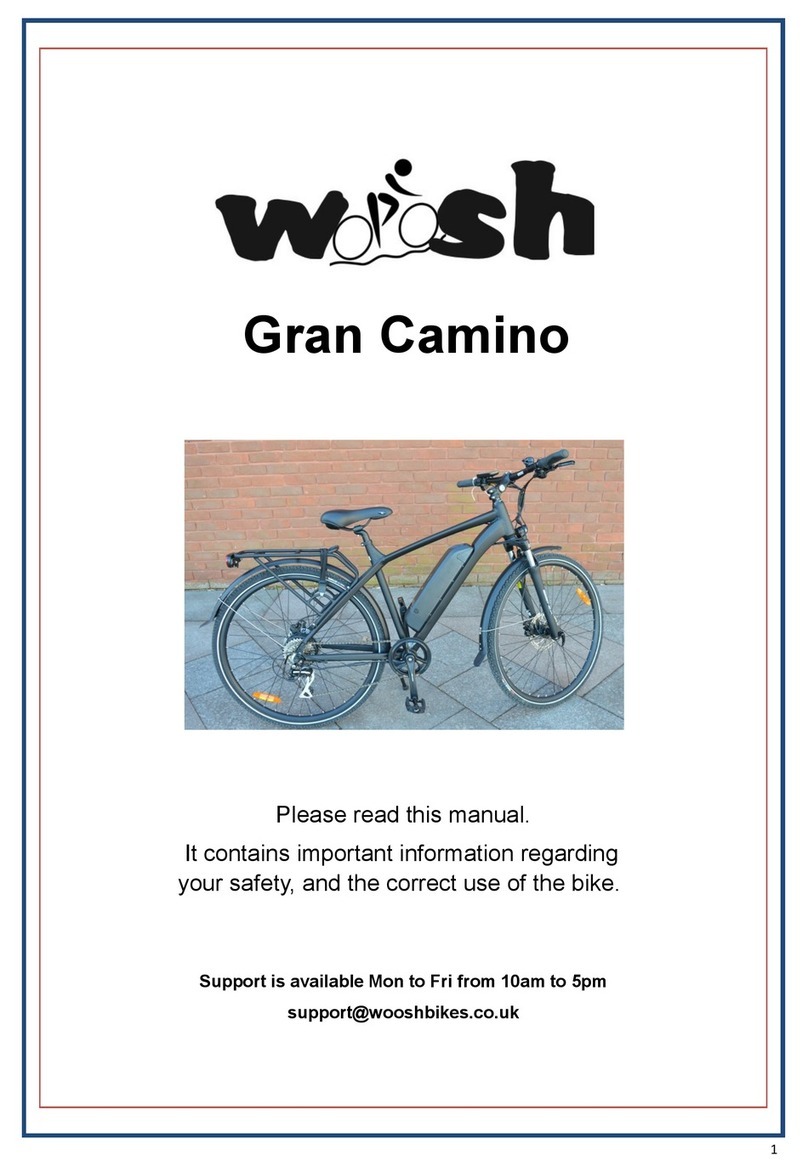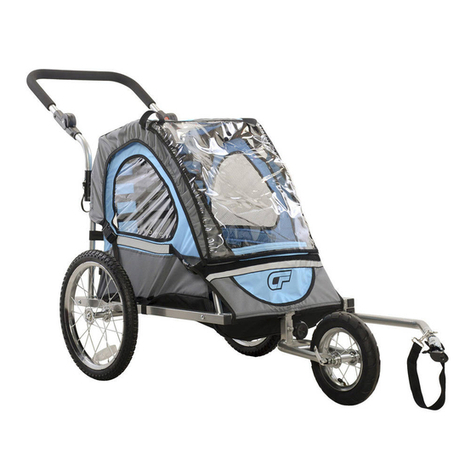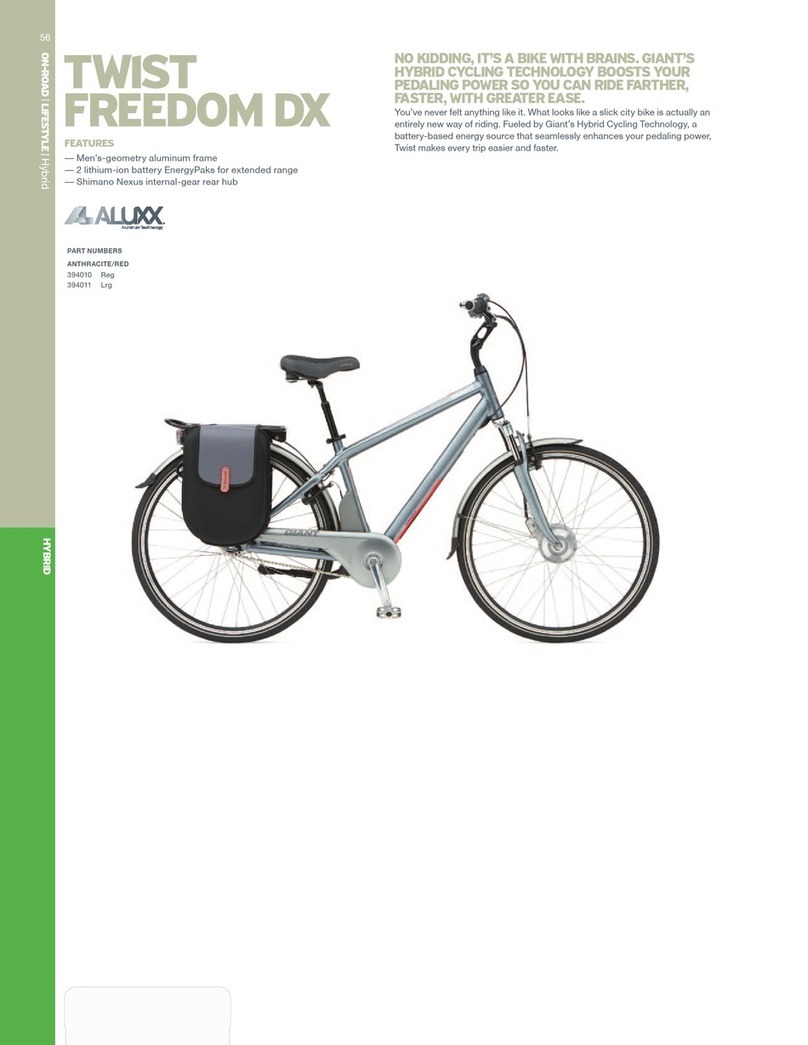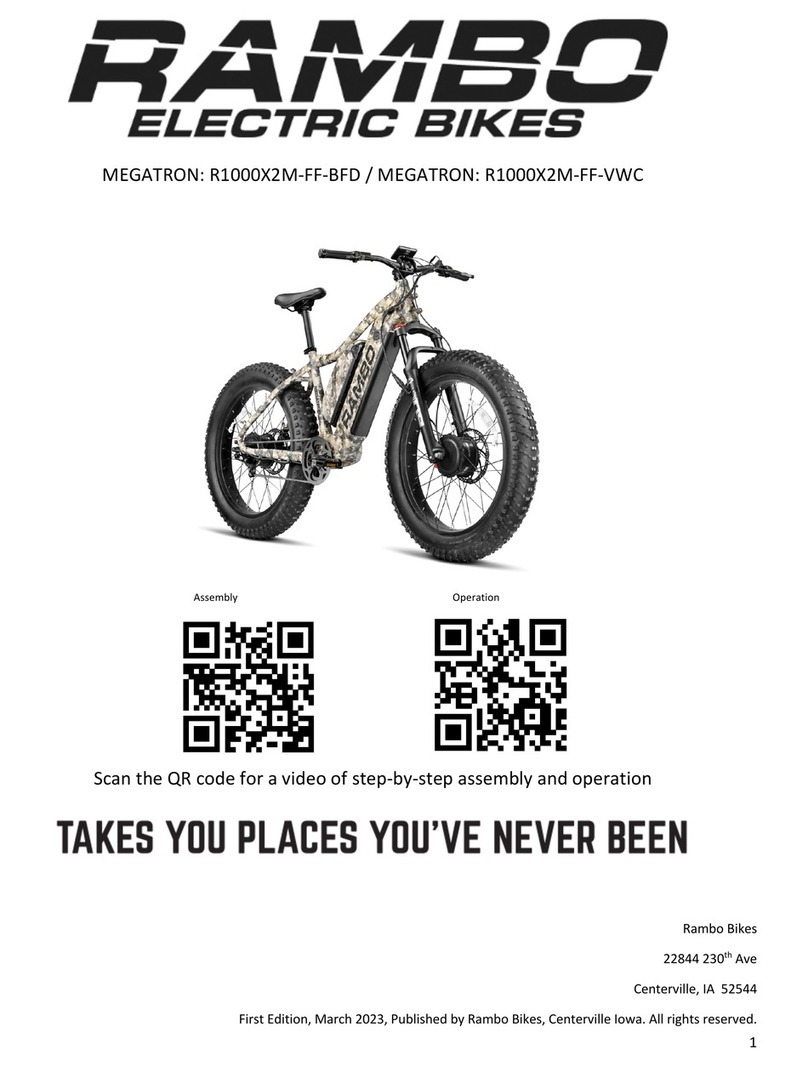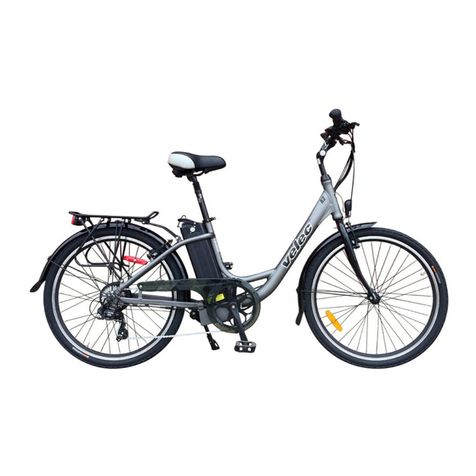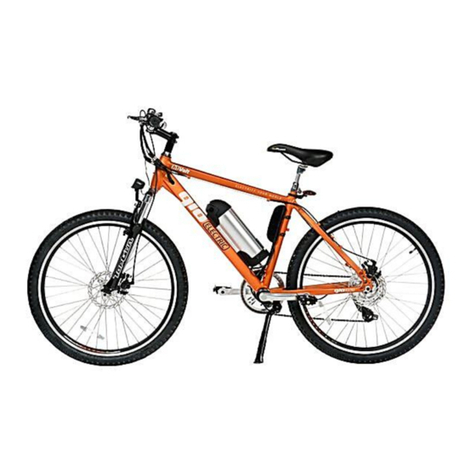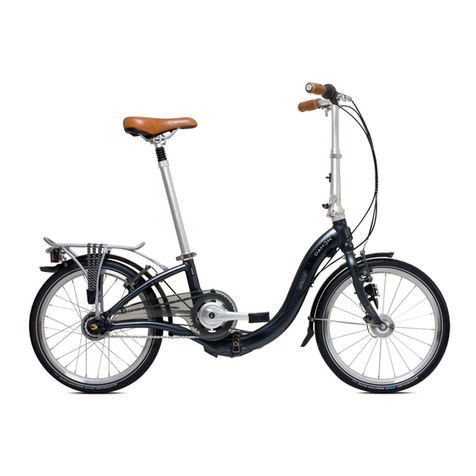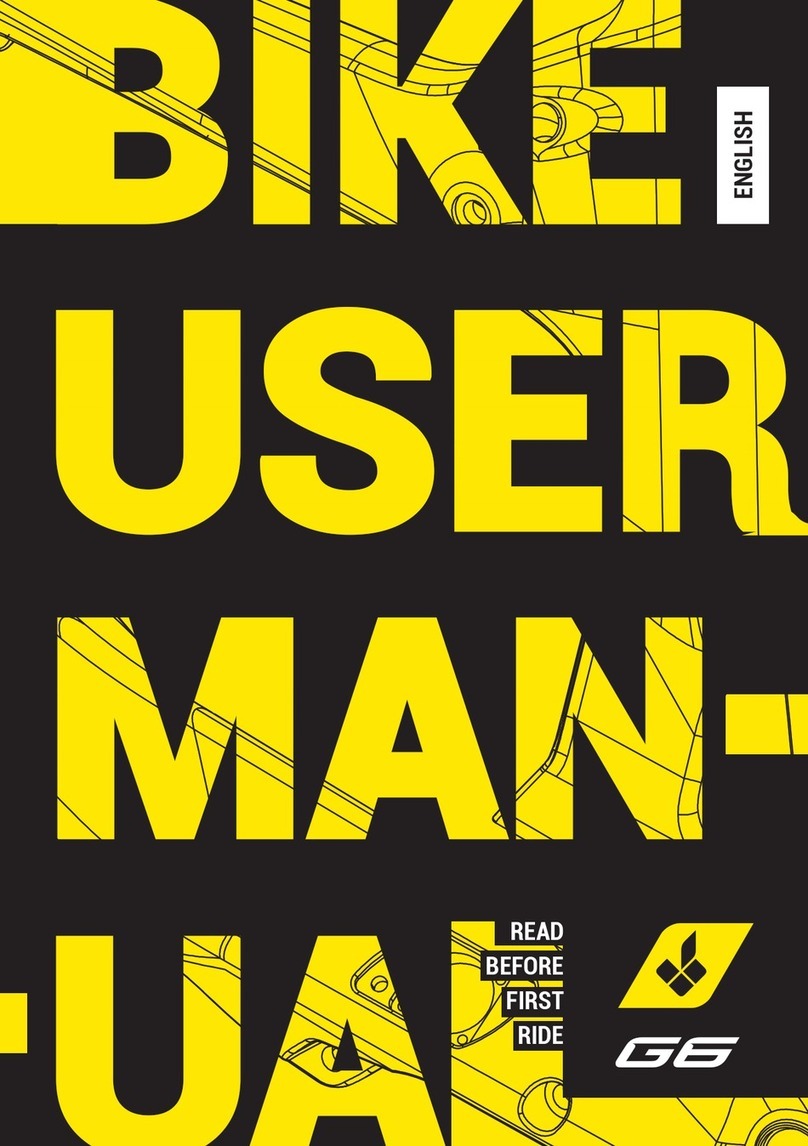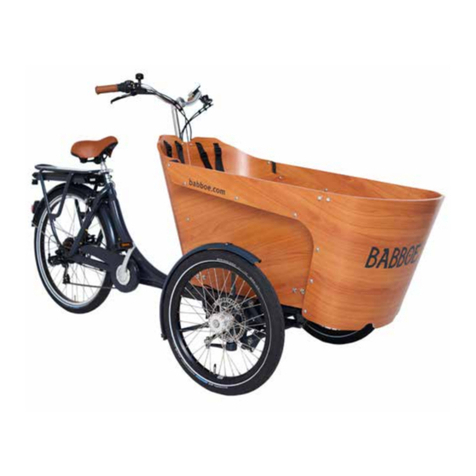Ezriderz Sledz User manual

Sledz
User manual
Index
1. Safety instructions and notes
1.1. Safety instructions
1.2. Notes
2. Basic structure and name.
3. Assembly method and requirements
3.1. Installation of big headlight and front
fender 3.2. Installation of front wheel
3.3. Installation of front brake
3.4. Installation of steering handle
3.5. Requirements of installation torsion for all
parts 4. Operation and adjustment
4.1. Introduction to boosting system
4.2. Charging
Ezriderz - copyright 2022

4.3. Adjustment of quick release parts
4.4. Reflection and lighting system
4.5. Safety height mark
4.6. Braking system
4.7. Speed control system
4.8. Damping system
4.9. Rear rack
5. Use and maintenance
5.1. Routine inspection before use
5.2. Everyday use, inspection and maintenance 5.3
Maintenance
5.4 Lubricating the e-bike
6. Riding technology
7. Troubleshooting
Items in the package:
Please check if the following items are inside.
electric bicycle - 1pc
battery - 1set
charger - 1pc
pedal - 1pair
Accessory:
tools bag - 1pc
Ezriderz - copyright 2022

1. Safety instructions and notes
1.1 Safety instructions
★ Do not operate this electric bike without
carefully reading the Manual and understanding
the performance of the electric bike
★Preparations before riding: wear your helmet,
gloves and other protective gears before riding
to protect yourself from damage in case of an
accident.
★We highly recommend that you observe traffic
rules and regulations when using this electric
bike. When riding in rainy, snowy or slippery
conditions reduce your speed and increase the
distance between yourself and other vehicles.
★ Maximum load: the maximum load of the bike is
(330 lbs/150 kg)
★ In case of frequent brake, startup, uphill,
headwind running, muddy roads, overload and
others, a large quantity of electric power of
the storage battery will be consumed, thus
affecting the continued mileage.
★If the storage battery is disabled for a long
time, make sure to charge it enough, and it need
be additionally charged once if its storage is
more than a month.
★ The battery can not be discarded randomly, so
Ezriderz - copyright 2022

as to avoid environmental pollution.
1.2 Notes
In order to your correct use and security, please
pay attention to the following matters:
a. In the process of use, pay attention to
checking the fastening status of the motor and
rear fork, and if a loose phenomenon is found,
it should be tightened timely.
b. When starting the power supply or meeting a
steep slope, use the Pedal to assist as far as
possible to reduce the starting current and
extend the battery life and continuation line
mileage.
c. On rainy days, please pay special attention
to: when the water depth is more than the wheel
center, it is likely for the motor to soak
water, thus resulting in failure.
d. Users must use the charger specified by the
manufacturer for charging the storage battery.
When charging, put the battery and charger
smoothly.
e. It is prohibited that other items are covered
on the battery box and charger to impede heat,
where a good ventilation environment should be
maintained.
f. Please keep appropriate air pressure inside
the tires, so as to avoid increasing the
resistance when riding, and easily wearing the
tires and deforming the Rim.
3 Assembly method and requirements
3.1. Installation of front wheel
Ezriderz - copyright 2022

3.1.1. Installation of common front wheel
1. Take out the front wheel, and loosen the nut
and hook on the front wheel axis;
2. Remove the black plastic rack below the Front
fork, and place the front wheel axis into the
Front fork contact pin;
3. Turn the hook and nut (* front fender stick)
to the front wheel axis, and tighten the nut
with 15mm opening wrench by 18N.m torque and
install the protective cap on the nut.
①Hook ② Front wheel axis nut M10mm ③Front fork
foot contact pin ④Front fender stick
★ When fastening the front wheel nut axis, press
down the Front fork by force so that the front
Ezriderz - copyright 2022

wheel axis can work closely with the Front fork.
3.3. Assembly requirements
In order to ensure the cycling safety and using
performance, the fastening requirements for the
standard parts at the key places are as follows:
A. The tightening torque of the front wheel nut
is not less than 18N.m
B. The tightening torque of the rear motor nut is
35 to 45N.m
C. The tightening torque of the middle axis
component lock is not less than 50N.m
D. The tightening torque of the core screw rod in
the Vertical handle stems is 15 to 18N.m
E. The tightening torque of the Across handle
Stems and the Vertical handle stems is 15 to
18N.m
F. The tightening torque of the saddle pipe ring
is 6 to 8N.m
G. The tightening torque of the saddle and the
Seat post ring is 15 to 18N.m
H. The tightening torque of the Brake handle is
not less than 10 to 12N.m
I. The tightening torque of the Derailleur is 8
to 10N.m 4. Operation and adjustment
Ezriderz - copyright 2022

4.1. Introduction to speed boosting system
The speed boosting system is also known as 1:1
boosting system. And the so-called 1:1 automatic
power assisting is that when you ride only by
means of feet, the sensor with you bike will
automatically sense your riding speed and control
the motor to assist you automatically in a
driving force with the same speed, so as to let
your ride easier and make the continuation line
mileage further.
1:1 boosting system comprises a controller,
sensor and induced cartridge.
① Controller
② Sensor ③
Induced
cartridge
4.2. Charging
Ezriderz - copyright 2022

As it will last a certain period of time for the
ex-factory, transport and storage of a just
purchased new bike, it is likely to result in
shortage of the battery power, the battery should
be first charged before it is used.
The charger configured or designated by eRider
Cycles must be used for charging otherwise it
might damage the battery, and may even lead to
fire and other danger.
4.2.1. Installation and charging of battery(as
shown in Figure 1 and Figure 2)
Ezriderz - copyright 2022

Figure 2
4.2.2. Charging steps and method
1. Check carefully whether the rated input
voltage of the charger is consistent with the
voltage of the power grid.
2. The battery can be directly put on the bike
for charging and can also be taken down from the
bike to be charged indoors and at other
appropriate places.
3. Connect first the output plug of the charger
with the charging jack of the battery properly,
and then connect the input plug of the charger
to the AC power supply.
4. At this time, the power indicator light and
the charge indicator light of the charger are
on, indicating that the charging has been
connected.
5. After charging, should first pull out the AC
Ezriderz - copyright 2022

power plug, and then pull out the plug connected
with the battery.
After the battery is fully discharged, the
one-time charging time is 6 to 8 hours, and
after the charge indicator light is red from
green, the power capacity of the battery has
been basically sufficient.
Ezriderz - copyright 2022

